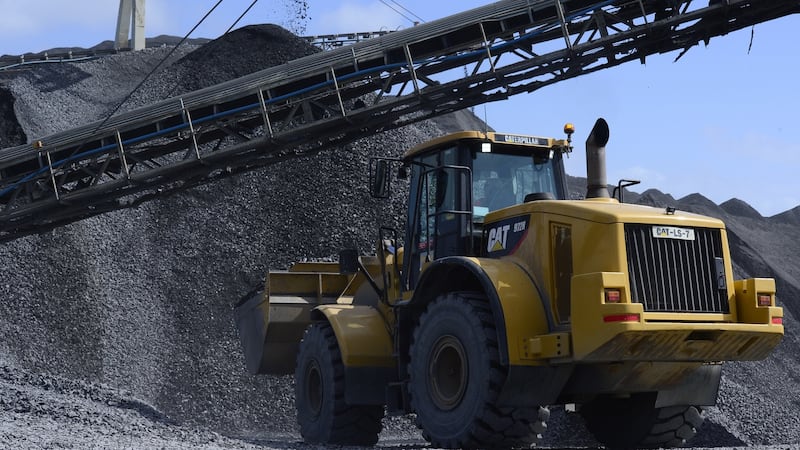Few things rattle public companies as much as the arrival of activist investors, saying, in the manner of a new-age life coaches: “We’re here to help you to be your best self.”
And no Irish group would be less enamoured by such pesky fellows infiltrating its shareholder register than CRH, which learned recently Europe's largest activist firm, Stockholm-based Cevian, has spent as much as €600 million building up a stake of under 3 per cent.
CRH doesn't warm too easily to outsiders. Just ask chief executive Albert Manifold, who joined Ireland's largest listed company 21 years ago, having previously worked in Dublin buyout firm Allen McGuire and packaging group Clondalkin.

"One of my proudest moments in CRH was about five years in when a guy I worked for told others at a meeting, 'That's Manifold – he's one of us'," he recalled during an interview with The Irish Times last year. "I'd finally become a CRH person."
Cevian has its work cut out, even if it classes itself as a different breed to US activists – who often publicly goad companies into taking certain actions, like selling businesses or loading up on debt to pay massive dividends.
Founded in 2002 by Christer Gardell and Lars Forberg, the firm likes to effect change from within, by joining the boards of companies it in which it invests. Its current portfolio contains a list of companies – including Finish industrial machinery group Metso; Swiss engineering company ABB and German steel-to-elevators conglomerate ThyssenKrupp – that have succumbed to Swedish persuasion to simplify themselves, by agreeing to sell or spin off assets.
Too sprawling
Cevian holds firm to a view that conglomerate structures are too sprawling and unwieldy. While CRH executives like to say they’re simple folks at heart, that “turn big rocks into small rocks”, the group, formed in 1970 through the merger of Cement Ltd and Roadstone Ltd in Ireland, has long since transcended its roots. It currently generates more than €28 billion of annual sales, employing 85,000 people across businesses that span cement and aggregates, to glazing systems, and DIY stores.
Since Manifold took charge in 2014, CRH has spent €13 billion on acquisitions – including the €6.5 billion purchase in 2015 of assets flogged off by European peer LafargeHolcim, and the $3.5 billion (€3.1 billion) takeover last year of Kansas-based Ash Grove, the fifth-largest US cement company.
He has also been ruthless in selling off underperforming or unwanted assets, which has raised €5 billion over the same period. Almost half of that was generated by the sale of its US distribution business Allied Building Products last June.
CRH can lay claim to being top of the class among European rivals in turning earnings before interest, tax, depreciation and amortisation (ebitda) into cash. It converted 75-80 per cent of its profits between 2013 and 2017, compared to less than 50 per cent for peers.
But the problem is, CRH’s ebitda margins look less than inspiring, at an estimated 12.6 per cent last year, compared to between 17 per cent and 25 per cent for HeidelbergCement, LafargeHolcim and Saint-Gobain.
And while CRH plans to boost its margin by 3 percentage points by 2021, analysts say it made little headway last year and they only expect it to achieve a little over half the target.
Some have concluded CRH’s growth in recent times has been bought. “Investors are beginning to question the company’s strategy,” said AllianceBernstein analysts led by Phil Roseberg in a report this week. “Organic growth has stalled over the last years.”
Moreover, there are concerns CRH has focused too much on “heavy-side materials” deals involving comprising cement and aggregate assets, leaving it more exposed to economic cycles – just as global investors are fretting about the next downturn.
Report
HSBC analysts suggested in a separate report this week, however, that the market is wrongly valuing CRH at lows – relative to earnings – not seen since the crash a decade ago. "The group is comfortably the leading US paving contractor and materials supplier . . . so is well placed to benefit from the pick-up in infrastructure construction activity we expect from 2019," they said.
With most its earnings coming from the US, where peers trade at a significant premium, Cevian may press CRH to look at a partial listing of its North American unit in New York to unlock value. Deutsche Bank suggested this idea early last year, but the board seems less than enthusiastic.
CRH is also currently considering options for its low-yielding European distribution business. A sale of this would help CRH automatically meet almost half of its 2021 profit margin target.
Might the group also be encouraged to offload its struggling Philippines cement business, inherited as part of the LafargeHolcim deal in 2015?
Cevian, which, it’s understood, first looked at CRH as far back as 2012, started to buy in late last year, following a 18 per cent slump in the stock from its June highs. If it sticks to form, it could build up a €2 billion position, equating to about 10 per cent.
By getting in now, the firm may have a say in CRH’s next move, as its current €1 billion share buyback programme nears completion. Manifold said last May the group expects to have €7 billion at its disposal over four years. Cevian has said it plans to engage with management after CRH’s annual results at the end of February. There’ll be no shortage of egos.
“We’re not the smartest guys in the room,” Manifold told investors at its annual general meeting last year. “But we’re not too stupid either.”
Oh to be a fly on the wall.













